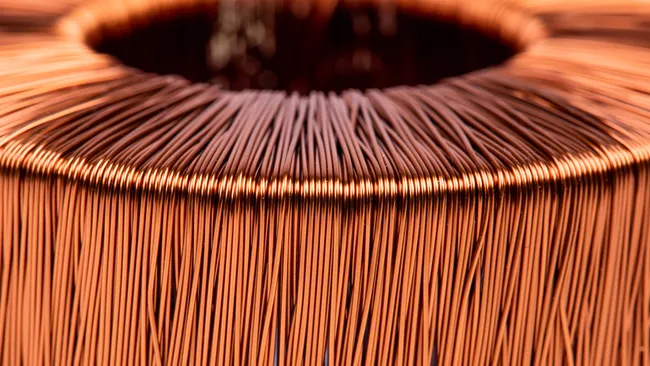Does copper exhibit magnetic properties?
The reason for copper’s unique properties comes down to the configuration of its electrons.
In our daily encounters, we typically observe that copper, along with wires, metal pipes, and kitchenware, is not attracted to magnets. However, various peculiar experiments have revealed that copper exhibits some unusual behavior in the presence of magnetic fields. This raises the question of whether copper is magnetic or not, and how it interacts with magnets.
Interestingly, all elements possess magnetic properties to some extent. The metals commonly recognized as magnetic, such as iron, nickel, and cobalt, belong to a distinct group known as ferromagnets. These elements have a strong interaction with magnetic fields and can form permanent magnets.
Nevertheless, there exist other types of magnetism that are considerably weaker, as explained by Michael Coey, a physics professor emeritus at Trinity College Dublin. Most elements fall into either the paramagnetic or diamagnetic category. Coey explains that “paramagnets exhibit a very slight magnetization in the direction of the applied magnetic field.” This implies that the element is minimally attracted to the magnet, but this effect is temporary and vanishes once the magnet is removed.
On the other hand, Coey describes diamagnets as having an even smaller magnetization in the opposite direction to the magnetic field. This results in a minute repulsive force towards the magnet, which also disappears in the absence of a magnetic field. Consequently, under normal circumstances, the magnetic properties of paramagnetic and diamagnetic materials go unnoticed.
Copper serves as an example of a diamagnetic material. However, the classification of an element into a specific category depends on its electrons. These negatively charged particles orbit the central nucleus of an atom in distinct layers called shells, which are further divided into levels known as the s orbital, the d orbitals, and the p orbitals.

Metals in the center of the periodic table exhibit a unique electron configuration. The s orbital is already filled with two electrons, while the d orbitals gradually fill from left to right across the row, accommodating a maximum of 10 electrons. As the orbitals fill, electrons are compelled to pair, which ultimately determines the magnetic properties of the elements. Paramagnetic elements possess more unpaired electrons, whereas diamagnetic elements have more paired electrons.
Additionally, each electron possesses a quantum property known as spin. The alignment of electron spins, either parallel or antiparallel, defines the strength of magnetism within an atom. When electrons align their spins in parallel, the atom exhibits a magnetic moment. Conversely, if the spins align antiparallel, the magnetic moment is nullified.
Copper, positioned in the ninth position, is expected to have two electrons in the s orbital and nine in the d orbitals. However, copper deviates from this pattern by taking one electron out of the full s orbital to completely fill the d orbitals. Consequently, all the d electrons are paired, with an equal number spinning up and down. As a result, copper lacks a magnetic moment and does not display magnetic behavior under normal circumstances.
Nevertheless, this unique configuration enables copper to interact with magnets in a distinct and highly significant manner. Magnetism and electricity are closely intertwined, as described by Lenz’s law in physics.
“In essence, a changing magnetic field will induce a current within a conductor,” explained Ernesto Bosque, a physicist at the National High Magnetic Field Laboratory in Florida. “Due to copper’s remarkably low electrical resistance, currents can flow effortlessly through it.”
The exceptional conductivity of copper can be attributed to its unpaired s electron. This phenomenon, referred to as electromagnetic induction, plays a crucial role in modern electricity generation. According to Bosque, a stator consists of insulated wires that rotate around a core, enabling it to function as either a motor or a generator. Interestingly, this concept also works in reverse: by passing a current through wire coils, a magnetic field can be generated in a metal core, resulting in the creation of an electromagnet.
Despite not being ferromagnetic, copper’s ability to interact with magnets is extensively utilized in various applications. It powers electronic devices, facilitates data storage on hard drives, and even contributes to the controlled deceleration of roller coasters.
This article is republished from livescience under a Creative Commons license. Read the original article.
Do not forget to share your opinion with us to provide you with the best posts !



0 Comments